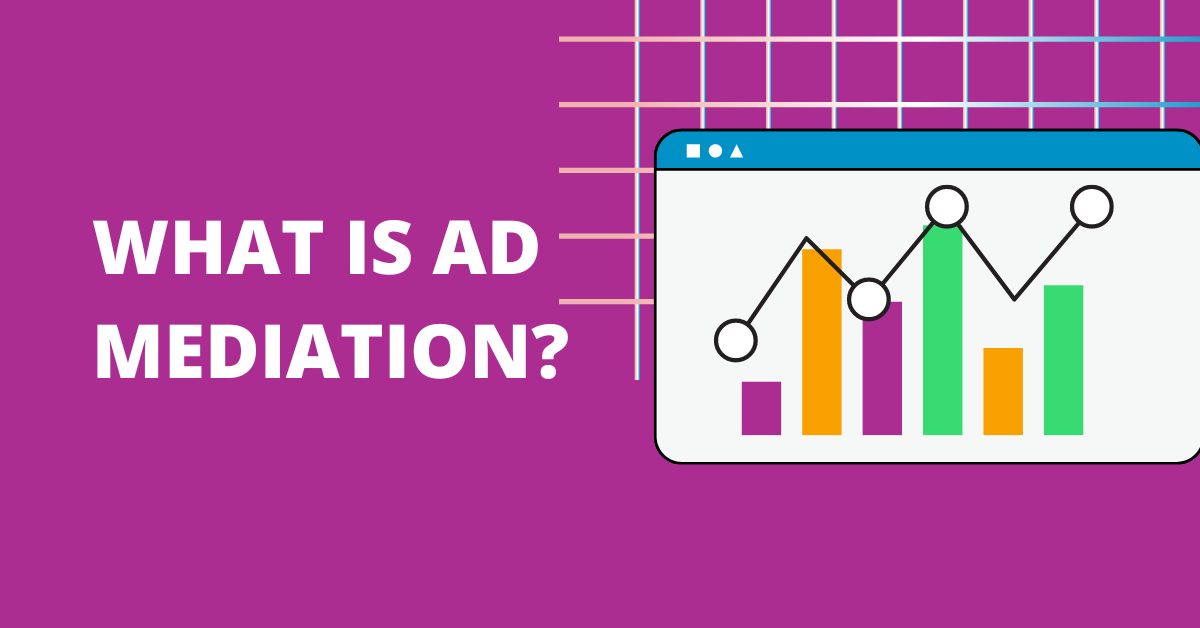
Ad mediation has been around since 2010, but publishers are now discovering the potential of these platforms since some can perform up to 20% better than a single ad network. It provides publishers with more revenue generation scope & complete control over how, when, & who gets their ad inventory. This blog post breaks down the key aspects you need to know about Ad Mediation.
Ad mediation is the use of technology and tools for monetization that helps maximize display ad fill rates and eCPM for publishers. Additionally, it could also include a service that enables publishers to find and display ads on their sites from ad networks, direct advertisers, and other sources.
Ad mediation platforms search for the best available ad networks while sending ad requests to multiple demand sources. This way, they ensure publishers find the best available ads to fill their ad slots.
Publishers rank ad networks in order of preference. If the top ad network can’t fill the ad request, the mediation platform tries the next preferred ad network until it fills the ad request.
A simple way to look at how ad mediation platforms try to maximize ad revenue for the publisher is by checking out the formula below:
Ad revenue = requests * fill rate * eCPM
With an increase in ad monetization, you can also see the following KPIs increasing:
Ad Mediation gives multiple ad networks access to your ad inventory, and gets them to compete against each other for ad slots. This process increases competition among advertisers and in return, increases your ad revenue. The mediation platform checks what CPM all the various ad networks are offering and looks for the highest one.
The best thing of all is that you don’t need to spend any time managing it. There’s an optimization algorithm that automatically makes sure the highest bidder wins.
With ad mediation, you get everything you need for monetization domination in a straightforward integration. As a result, developers save time integrating SDKs. They also don’t have to look after and manually manage their ad monetization strategy. Instead, the entire process is managed from one platform.
CPM is based on the network’s historical performance and set manually. That’s why it’s essential to check your network CPM consistently to ensure you maximize your ad revenue.
Inmobi put’s ad mediation into further perspective from a mobile app standpoint in the video below.
In Ad Mediation platforms, ad inventory is sold through either waterfall bidding or in-app header bidding.
In Waterfall Bidding, multiple ad networks are prioritized and ordered based on their gross ad revenue. In a nutshell, you make a request to fill an ad slot through an ad mediation platform. Once the ad is filled, it moves on to the next ad network in line.
The header bidding method, on the other hand, engages multiple advertisers through ad tech like PubGuru in real-time bidding (RTB) to bid for a specific ad slot. The highest bidder spends $0.01 more than the 2nd highest bidder for the ad slot, and the mediation platform picks the highest-spending advertisers so that publishers can sell their inventory at the highest rate.
Each advertiser is able to access hundreds of ad exchanges and decide how much to bid on ad inventory making it more cost-effective for them when it comes to audience targeting.
1- Improved Display Ad Fill Rates
As the amount of ad space sold increases, you can see a significant improvement in display ad fill rates. Multiple ad networks can access publisher ad inventory, allowing advertisers to bid on their ad inventory creating more competition between advertisers willing to pay more.
2- Improved CPMs
It would not be possible to sell inventory to multiple ad networks without ad mediation. More ad networks mean improved CPM rates for publishers! As advertisers get aggressive when it comes to competing for impressions, CPM rates spike.
3- All in one Mediation Dashboard
Multi-ad network mediation allows publishers to manage multiple ad networks with one platform, as well as enabling app developers to integrate multiple ad networks into their apps. This saves publishers a tonne of time since you don’t need to manage ad networks one by one.
Ad mediation can save you a lot of time in managing ads and optimizing your ad revenue. However, most of the time, it does not contain the optimal setup or you need additional optimization. Why not let the ad optimization experts manage your ad inventory for you? We’ll help you maximize your ad inventory by optimizing ad layouts, advising you on the best ad networks to join, protect your traffic from ad fraud, increasing advertiser demand, and much more!
Ready for ad monetization domination? Sign up for a Starter account at MonetizeMore today!
Ad mediation is the use of technology and tools that helps maximize mobile ad fill rates and eCPM for publishers. Find out more about ad mediation in our blog post.
Ad mediation platforms search for the best available ad networks while sending ad requests to multiple demand sources, ensuring publishers find the best available ads to fill their ad slots.
AdMob mediation is a feature from Google that helps app publishers manage all their demand sources in one location. The platform will optimize ad revenue by ranking demand partners based on performance and using the best sources to fill ad slots.

Kean Graham is the CEO and founder of MonetizeMore & a pioneer in the Adtech Industry. He is the resident expert in Ad Optimization, covering areas like Adsense Optimization,GAM Management, and third-party ad network partnerships. Kean believes in the supremacy of direct publisher deals and holistic optimization as keys to effective and consistent ad revenue increases.
10X your ad revenue with our award-winning solutions.